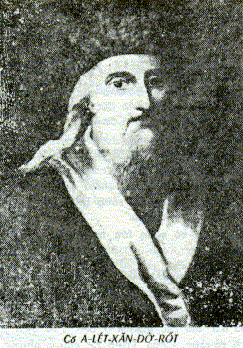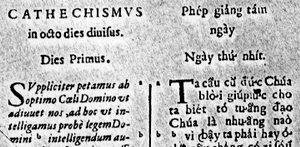Portuguese Missionaries and their Influence on Vietnamese
 |
The Jesuits first arrived in Vietnam from their base in Macau in 1615 at a time when the country was divided into north and south. They conducted missionary activities in both parts of the country, but due to the difficult political and military situation and a delicate relationship with the ruling powers, they suffered expulsion on a number of occasions. The final expulsion came in 1645.
Jesuit missions produced a number of important linguistic achievements in Asia, including Matteo Ricci's romanisation of Chinese and a grammar of Japanese by the Portuguese missionary João Rodríguez (1561-1634), but nowhere was their impact as deep and long-lasting as in Vietnam.
The first Vietnamese-Portuguese dictionary was compiled by Gaspar d'Amiral and the first Portuguese-Vietnamese dictionary by Antonio Barboza, both Portuguese missionaries. Neither of these works is now extant, but they formed the basis of the ground-breaking Dictionarium Annamiticum Lusitanum et Latinum by Alexandre de Rhodes (1591-1660, picture at left), which appeared in 1651. Rhodes, who was French and not Portuguese, depended heavily on the two earlier dictionaries in compiling his work. The Rhodes dictionary was printed in the Roman script (quoc ngu) and contained over 8000 Vietnamese entries with glosses in Portuguese and Latin.
 |
Rhodes also wrote a catechism in Latin and Vietnamese, divided into eight days, of which the top of the page for the first day is shown at right.
Later missionaries continued to push the quoc ngu script as a means of converting Vietnam to Christianity, and it finally replaced Chinese-based writing systems to become the official Vietnamese script early in the 20th century.
For more information, see Tu Dinh Nguyen's page on Vietnamese lexicography. A brief biography of de Rhodes can be found at the Encyclopedia Britannica.
No comments:
Post a Comment